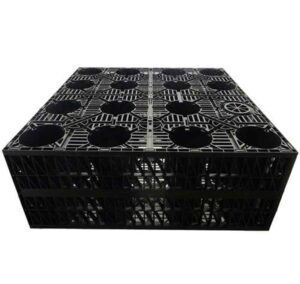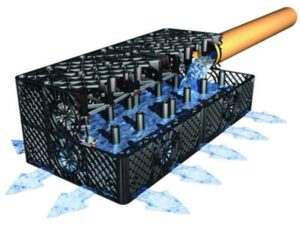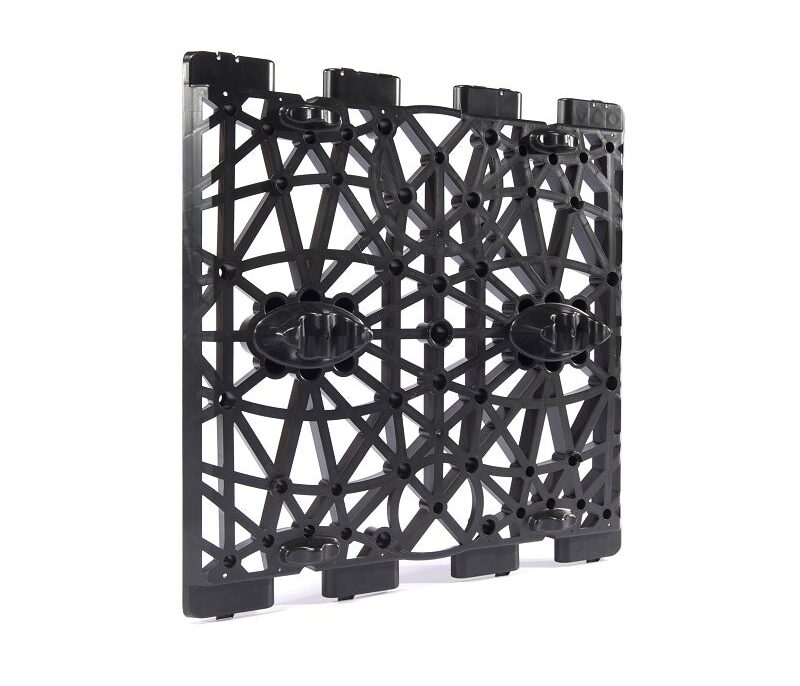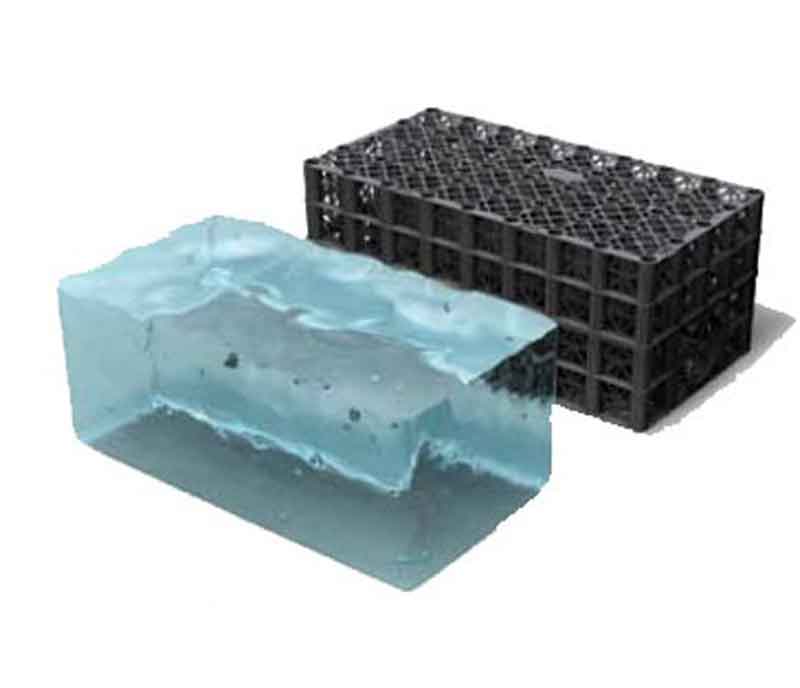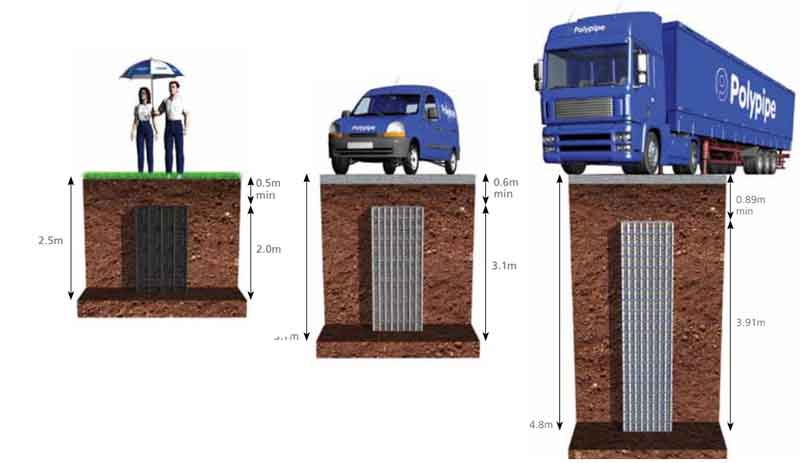Here at Drainage Superstore, we are always looking for ways in which we can help our customers, whether it is offering advice and guidance, or recommendations of the best product for their specific project. Soakaway crates are often forgotten about or not considered, but they can be incredibly useful and worthwhile in reducing surface water and minimising the amount of strain placed on drainage systems.
What is a soakaway crate?
A soakaway crate is typically a plastic crate that allows water to percolate through the soil instead of creating a build-up of surface water or putting pressure on drainage and run-off systems.
Crates consist of a plastic framework in the shape of a cube, filled with a grid-like formation which creates stability whilst also having a number of gaps that allow water to filter through. The plastic framework helps to delay the passage of water into the soil, which prevents water clogging and a build-up of surface water because the ground does not become saturated.
Why do I need a soakaway crate?
Water management is becoming increasingly important as the amount of impermeable surface in urban areas increases. The fewer permeable surfaces there are, the more pressure is put on drainage systems, as any water cannot percolate through the surface and into the ground. When drainage systems are put under pressure a number of issues can arise, including flooding, burst pipes, or splits and cracks forming in pipes. Additionally, there is no longer an automatic right to connect to a sewer, so soakaways act as an alternative option for surface run-off.
A soakaway crate is used as part of a full drainage system in areas that experience high levels of surface water or run-off. Soakaway crates help to remove some of the burdens that surface water and run-off put on drainage systems by providing an alternative drainage solution. Soakaway crates take run-off water and allow it to slowly percolate back into the ground instead of going through the drainage system.
Why use soakaway crates instead of rubble?
There are a number of benefits to using soakaway crates instead of the more traditional method of using rubble.
Time-saving
Traditionally, soakaways were created by simply digging a hole where the drainage pipe ends and filling it with rubble. This is quite a time-consuming process, as the transportation of large amounts of rubble is required, as well as digging the large hole and lifting the rubble to and from the vehicle.
Plastic soakaway crates on the other hand are incredibly lightweight, making lifting and moving easy and quick. Additionally, plastic soakaway crates generally come flat-packed, meaning transportation is also quick and easy. The soakaway crates simply consist of a few pieces of plastic that easily clip together.
Long-term solution
Traditional rubble methods of soakaways are also a relatively short-term solution, as well as time-consuming. Over time, sediment gets washed into the soakaway along with the surface run-off, and builds up amongst the rubble, filling the spaces that the water should filter through. This results in blockages and recreates the original problem of standing water.
On the other hand, plastic soakaway crates provide a longer-term solution to standing water. Soakaway crates have been manufactured with a design that doesn’t get blocked up with sediment – there are a number of different pathways the water can take in order to reach the ground and infiltrate, meaning that even if sediment does pass through the grating, it is unlikely to block up the spaces – and even if it does, there are plenty of alternative pathways the water can take.
Sturdy and durable
Soakaway crates are incredibly sturdy and durable. There are a number of different soakaway crates available, depending on the area in which it is to be used – for example, if it is an area that experiences heavy traffic or lorry loading. This means that when used in the appropriate area, the soakaway crate will withstand weight above it, and will not become compressed over time, reducing the functionality of the soakaway crate.
Comparatively, traditional rubble soakaways are less effective in this regard – if heavy loads are placed on them the rubble can be compressed, reducing the amount of space there is for water to pass through, reducing their effectiveness.
Important information
Soakaway crates must always be at least 5 metres away from a building or road according to Building Regulations Part H3, and 2.5 metres away from a boundary.
If your project involves hard landscaping, you may need to provide SUDS (Sustainable Urban Drainage System) for surface water, which ensures that surface run-off is collected where it falls, and reused where possible.
For more information on soakaway crates, read our guide on how many soakaway crates you need for your project.


